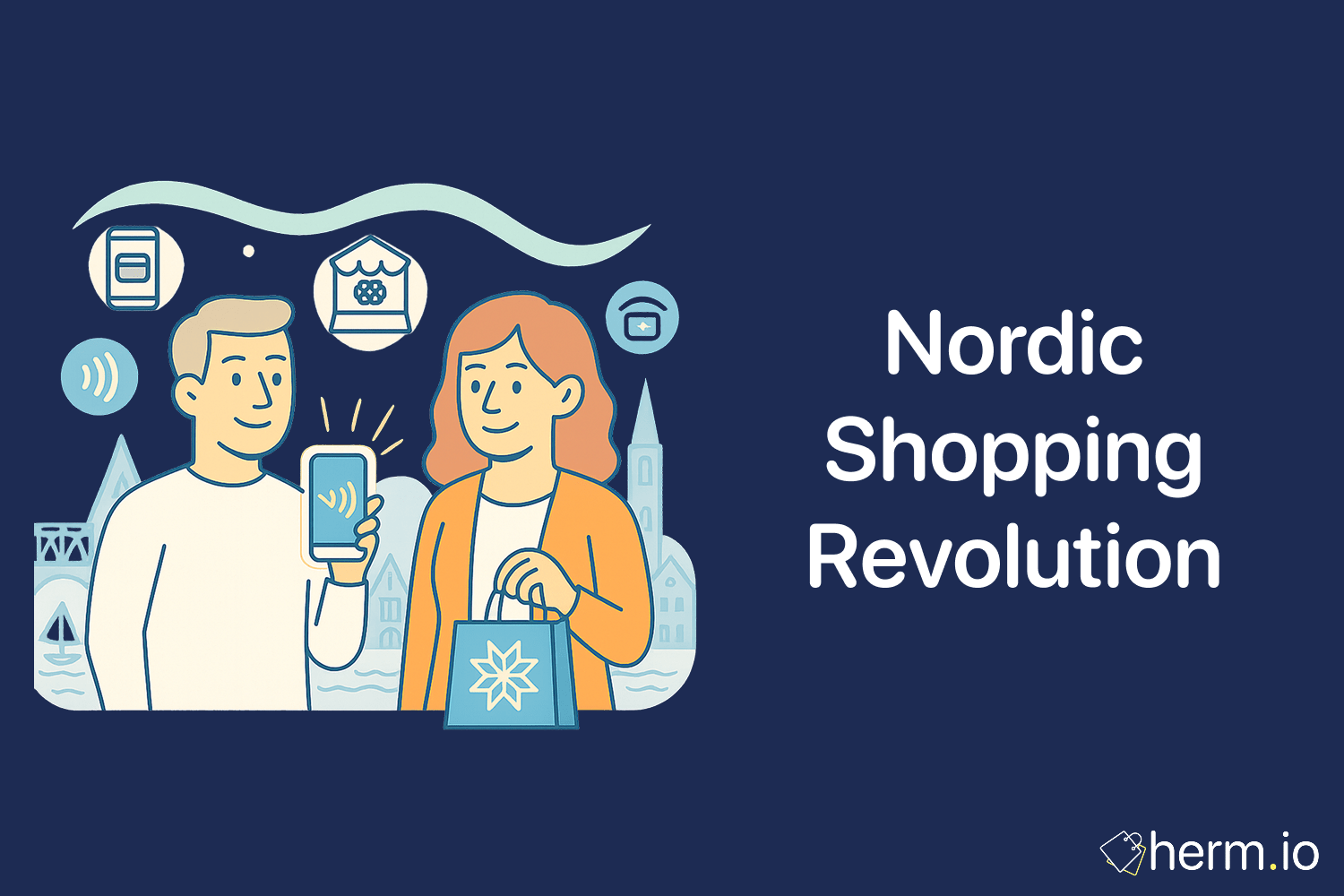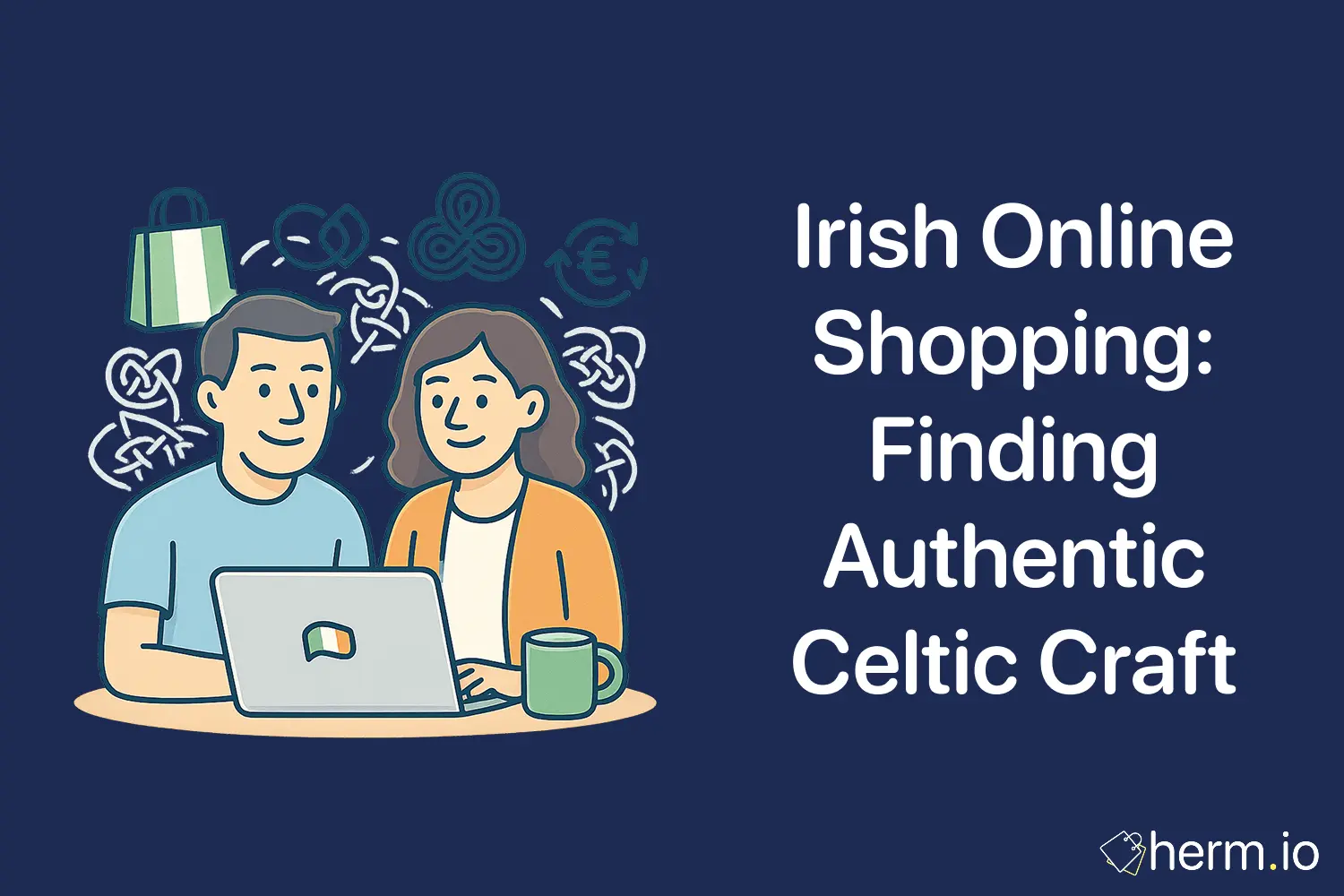
Salut! I've been testing Nordic shopping platforms for months now, and honestly, it feels like shopping three years into the future. Picture this: you're buying a winter coat in Stockholm, paying with Swish in seconds, collecting it from a smart locker when you fancy, and returning it with zero hassle if the fit isn't right. Just like discovering a hidden gem in Copenhagen's design district, Nordic e-commerce reveals itself as something extraordinary once you know where to look.
The numbers speak volumes here. Sweden processes over 70% of retail transactions digitally, Denmark leads Europe in mobile payment adoption, and Norway somehow makes cross-border shopping feel effortless despite being outside the EU. These aren't just statistics—they represent a complete rethinking of how online shopping should work.
Quick Wins: Start Shopping Like a Nordic Local Today
- Download Klarna app for "try before you pay" across all three countries
- Choose locker delivery instead of home delivery to avoid missed packages
- Check country-specific versions of pan-Nordic sites for better pricing
- Set up price alerts during "Rea" (Sweden), "Udsalg" (Denmark), or "Salg" (Norway) periods
- Always verify DDP (Delivered Duty Paid) status when shipping to Norway
Revolutionary Payment Tech That Actually Works
Here's what gets me excited about Nordic fintech: these aren't gimmicky payment apps trying to solve problems that don't exist. Swish in Sweden handles person-to-person transfers and online purchases with bank-level security. MobilePay in Denmark processes payments faster than most card readers. Vipps in Norway combines wallet functionality with social features that make group purchases simple.
The integration runs deeper than surface-level convenience. These payment systems connect directly to national ID systems (BankID in Sweden/Norway, MitID in Denmark), creating authentication that's both bulletproof and surprisingly smooth. Testing this firsthand reminded me of using WeChat Pay in Shanghai—except Nordic systems prioritise privacy rather than data collection.
Klarna deserves special mention. While the rest of the world treats buy-now-pay-later as a recent innovation, Swedish shoppers have been using Klarna's invoice system for over a decade. The app automatically adjusts payments when you return items, essentially putting purchases on hold until you're satisfied. This isn't just clever—it fundamentally changes how you approach sizing and quality decisions.
Platform Intelligence: Where Locals Actually Shop
Every Nordic country maintains distinct shopping ecosystems, but the smart money lies in understanding regional differences. I've spent considerable time mapping these platforms, and the patterns reveal fascinating insights about local preferences.
Sweden's tech-forward approach shows in platforms like CDON (think Amazon but with better seller verification) and electronics specialists like Webhallen. The real discovery came from testing Sellpy—a managed resale service that handles photography, listing, and shipping for second-hand sales. This isn't just sustainability theatre; it's genuine circular commerce done right.
Denmark's practical efficiency shines through Bilka.dk's click-and-collect system and Proshop's component-level electronics browsing. Danish platforms excel at hybrid online-offline experiences. Testing Matas' loyalty programme revealed integration between online purchases and physical store benefits that most retailers only dream about.
Norway's geographic challenges drive innovation in logistics. Komplett.no manages to deliver PC components to remote areas with reliability that puts many metropolitan services to shame. The real breakthrough came from understanding how Norwegian retailers handle VAT collection at checkout—turning cross-border complexity into seamless transactions.
Sustainability Features That Set Standards
Nordic sustainability isn't marketing spin—it's embedded in shopping infrastructure. The Nordic Swan Ecolabel (Svanen) appears across product categories with verification processes that would challenge most certification bodies. More importantly, these platforms integrate second-hand options as naturally as new inventory.
Blocket in Sweden, Finn.no in Norway, and DBA.dk in Denmark function as sophisticated marketplaces rather than basic classifieds. Testing these platforms revealed features like seller verification, integrated payment protection, and delivery coordination that rival dedicated e-commerce sites. The Tise app, operating across all three countries, brings social commerce elements to second-hand trading with remarkable success.
Packaging innovation deserves recognition too. Many Nordic retailers default to minimal packaging with recycled materials, offer consolidated delivery windows that reduce emissions, and provide repair guides alongside product listings. This isn't virtue signalling—it's practical implementation of circular economy principles.
Cross-Border Shopping Strategy
Shopping across Nordic borders reveals the sophistication of modern European commerce. Sweden and Denmark's EU membership simplifies transactions, but Norway's approach to international shopping actually works better than many EU implementations.
The DDP advantage changes everything for Norway-bound orders. Retailers that collect MVA (Norwegian VAT) at checkout and ship with duties prepaid eliminate customs surprises entirely. This system works so smoothly that ordering from Norwegian sites often feels more predictable than domestic purchases in other countries.
Currency optimisation adds another layer. Boozt.com operates separate storefronts for SEK, DKK, and NOK with localised pricing and promotions. Comparing identical products across these versions occasionally reveals price differences worth the extra clicks.
Locker logistics require local knowledge. Many pick-up points verify identity using national ID systems, so international visitors need alternative arrangements. Home delivery often proves more reliable for cross-border orders, despite seeming less convenient initially.
Advanced Shopping Techniques
Nordic platforms reward systematic approaches. Price tracking becomes particularly effective during predictable sale cycles—Black Week extends beyond Friday, January clearances span weeks rather than days, and summer sales coincide with holiday periods.
The "two sizes" strategy works brilliantly when return policies support it. Swedish fashion retailers particularly excel at free returns, making size experimentation economically sensible. Always verify return costs before ordering multiple options—domestic returns typically include prepaid labels, while cross-border returns may require separate postage.
Newsletter subscriptions unlock early access codes and stackable promotions. Nordic retailers often layer discounts rather than applying single percentage reductions, creating opportunities for substantial savings during promotional periods.
Future-Forward Features Worth Adopting
Several Nordic innovations deserve global adoption. Consolidated delivery windows reduce environmental impact while improving reliability. Transparent supplier information helps evaluate product quality and ethical sourcing. Integrated repair services extend product lifecycles naturally.
The authentication systems particularly impress me. Strong Customer Authentication (3-D Secure 2) feels seamless rather than obstructive when properly implemented. BankID verification adds security without friction—quite the opposite of most security theatre we encounter elsewhere.
Mobile-first design across Nordic platforms demonstrates responsive commerce done right. These aren't desktop sites forced into mobile layouts; they're designed for smartphone-native shopping behaviours from the ground up.
FAQ Section
Do Nordic payment methods work for international shoppers?
Swish, MobilePay, and Vipps typically require local bank accounts and national IDs. International visitors can use Klarna (which works globally) or standard card payments with 3-D Secure verification for most purchases.
How reliable is Norwegian DDP shipping compared to standard international delivery?
DDP shipping to Norway often proves more reliable than EU domestic delivery because retailers pre-clear customs and handle all documentation. You'll see final prices at checkout with no surprises at collection.
What's the real advantage of Nordic locker systems over home delivery?
Lockers eliminate failed delivery attempts and provide flexible collection times, but they require local mobile numbers or ID for verification. For visitors, home delivery often works better despite seeming less convenient.
Are Nordic second-hand platforms trustworthy for expensive items?
Yes, platforms like Blocket, Finn.no, and DBA.dk include seller verification, payment protection, and dispute resolution. Managed services like Sellpy add professional handling and authentication for higher-value items.
Conclusion
Nordic shopping platforms offer a glimpse into commerce's future—where payment friction disappears, sustainability integrates naturally, and cross-border complexity becomes invisible. These aren't just regional quirks; they're scalable innovations that transform the entire shopping experience.
The next time you're frustrated with clunky checkout processes or unexpected customs fees, think about Nordic solutions. Their approach proves that sophisticated technology can simplify rather than complicate commerce.
Have you tested any Nordic shopping platforms or payment methods? The learning curve is minimal, but the insights into future-forward e-commerce are invaluable.

Théo Baptiste Lefèvre
I'm a tech enthusiast and trend researcher who keeps teams informed about the latest in technology, AI, and digital innovation. I specialize in identifying emerging tools and breakthroughs, serving as a bridge between cutting-edge developments and practical applications.

.png)








.png)

.png)
.png)
.png)